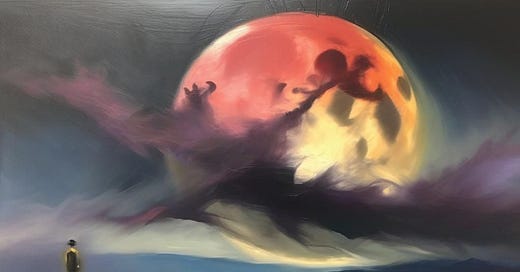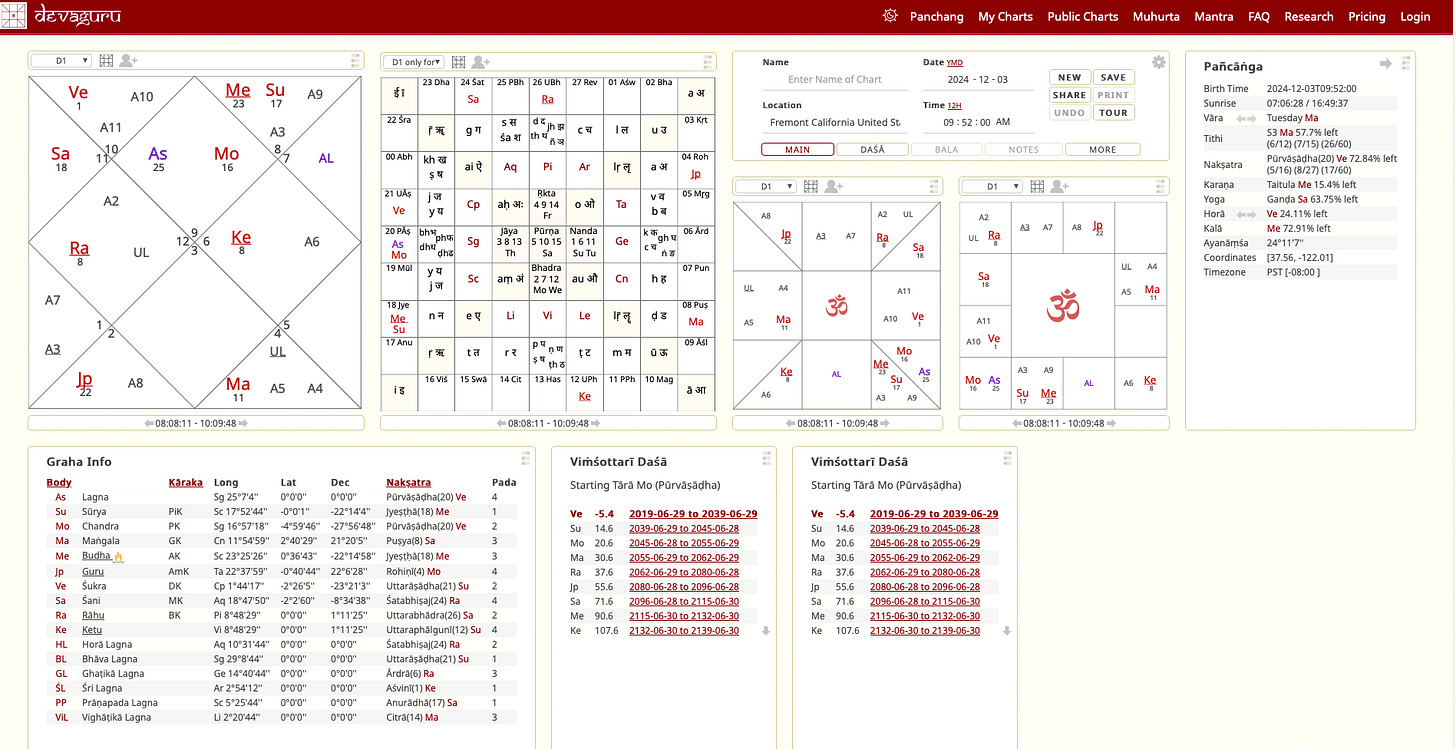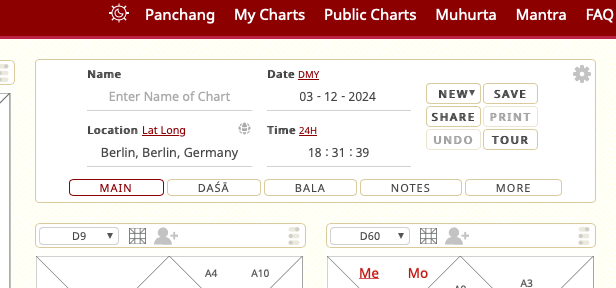I’m committed to completing the 27 Moons Project so that I have a basic text about how each Nakshatra impacts the mind of those born with their moon in that particular division.
However, I’ve heard from a few readers with little to no knowledge of Vedic astrology who’ve told me they find these posts difficult to follow.
Trust me, I’ve been there.
When I first became interested in Vedic astrology, quite by chance, the only Sanskrit words I knew were Om and Namaste.
When I began studying more seriously with Freedom Cole, I found many of the terms and concepts initially overwhelming. Most of my fellow students were either from India or (if from the West) already involved in a related discipline, such as yoga or Ayurveda.
This put me at quite a disadvantage and meant I had a lot of catch-up work to do.
In both my posts and my Vedic astrology consultation practice, I’m truly committed to working both with those who already have more in-depth knowledge of Jyotish and Vedic concepts as well as those who are curious, but complete beginners.
After all, I was also part of that second group just five short years ago.
Vedic astrology has expanded and changed my world in mind-blowing ways since then – and I want to make sure that those drawn to my work can connect with this amazing art/science regardless of their prior level of knowledge or cultural context.
Two new sections
Before I get into the topic of this post, I would like to point out that I’ve created two new sections in my newsletter to address potential knowledge gaps.
These sections are as follows:
Vedic Astrology Essentials: This is for those with beginner or intermediate knowledge about Vedic astrology who would like to learn or review some of the basics.
Vedic Astrology Deep Dive: This is for those who would like to learn or explore more advanced Vedic astrology techniques. Although curious beginners are welcome here too, be warned that these are not the texts where I’ll hold back on the Sanskrit or more advanced concepts.
Please note: If you’re a beginner who finds more advanced deep dives too overwhelming, or a more advanced students of Jyotish who finds the beginner stuff boring, you can find out how to unsubscribe from the section that doesn’t suit your interests here.
That way, you’ll only be receiving e-mails with content you find relevant and engaging.
Ok, let’s move on to the actual topic of this post: how to find your moon’s Nakshatra.
How to find your moon’s Nakshatra
Here a few fool-proof tips to get this done in a snap.
Step 1: Go to deva.guru. This is a subscription-based Jyotish (Vedic astrology) software that is also free to use.
Step 2: When you go to the website, you’ll see a bunch of charts and data that look something like this.
If you’re a beginner, don’t worry! You only need to do quick steps to find the info you’re looking for.
If you’re a budding Jyotish knowledge nerd, be in awe! Vedic astrology is incredibly technical. If you stick with it, you can learn what all of this means, not to mention the wealth of techniques and charts hiding behind all those toggles and drop down menus!
Step 3: We’re going back to your beginners again here.
Now that you’ve seen all the information a professional Vedic astrology has to understand and interpret (and no, I would never expect you to understand any of this during a consultation. When my clients are newbies or not particularly interested in the technical sides of things, this info is for my brain only), all you have to do is fill in your information at the top of the page as shown below.
Just put in your date of birth, location and time. You only need to enter your name if you plan to save the chart.
FYI, to get an accurate birth chart, it is important to have the right birth time (e.g., from a birth certificate). However, since we’re only trying to see the moon’s Nakshatra here, the day and a rough estimate of the time is most likely ok.
I say “most likely,” because Nakshatras can (and do) change at any time. In many cases, however, the entire day of your birth will have the same Nakshatra. If you don’t have access to your birth time, you can also just enter in 12:00 pm for now and then double check later to make sure you have the right Nakshatra for your moon.
Step 4: Now go down to this chart at the bottom corner.
Find the Moon in the “Body” section, which is conveniently labeled “Mo” and Chandra, the name for the Moon in Sanskrit.
Then look for the name of the third Nakshatra in the list, in this case Pūrvāṣāḍha. Ignore everything else as trying to figure out what it means will only make your head explode.
A few nerdy extras
As you can see in the list, every planet in your chart has a Nakshatra – I may write more about this in the advanced deep dive section at some point, so subscribe and/or stay tuned if that’s your kind of thing.
For those who prefer to keep things simple, I’ll continue writing the 27 Moons posts (I have 18 so far), although I plan to add some extra bits, such as questions to contemplate if this happens to be your moon’s Nakshatra.
If you’re wondering about the various accent marks on the Sanskrit words in the chart above, they are transliteration marks. In other words, the process of representing the sounds and characters of the Sanskrit language using the Latin alphabet.
For example, the letter “a” spelled like ā means this is a longer vowel, while an “s” spelled like ś means you need to pronounce the word with an “sh” sounds. Therefore, in proper Sanskrit transliteration, the god Shiva is written as Śiva.
Unless you’re a Sanskrit nerd like I am, using the correct Sanskrit transliteration isn’t that important when it comes to understanding basic Vedic astrology. However, if you don’t read Devanagari script (which looks like this: संस्कृत) transliteration is vital to ensure you are pronouncing mantras or other Sanskrit texts correctly.
I tend to prefer to use the transliteration marks in my content, so now you know what it is if this was a mystery to you before!
Michelle R. Dean is a Vedic astrologer and writer based in Berlin. To find out more about Michelle, swing by here.








